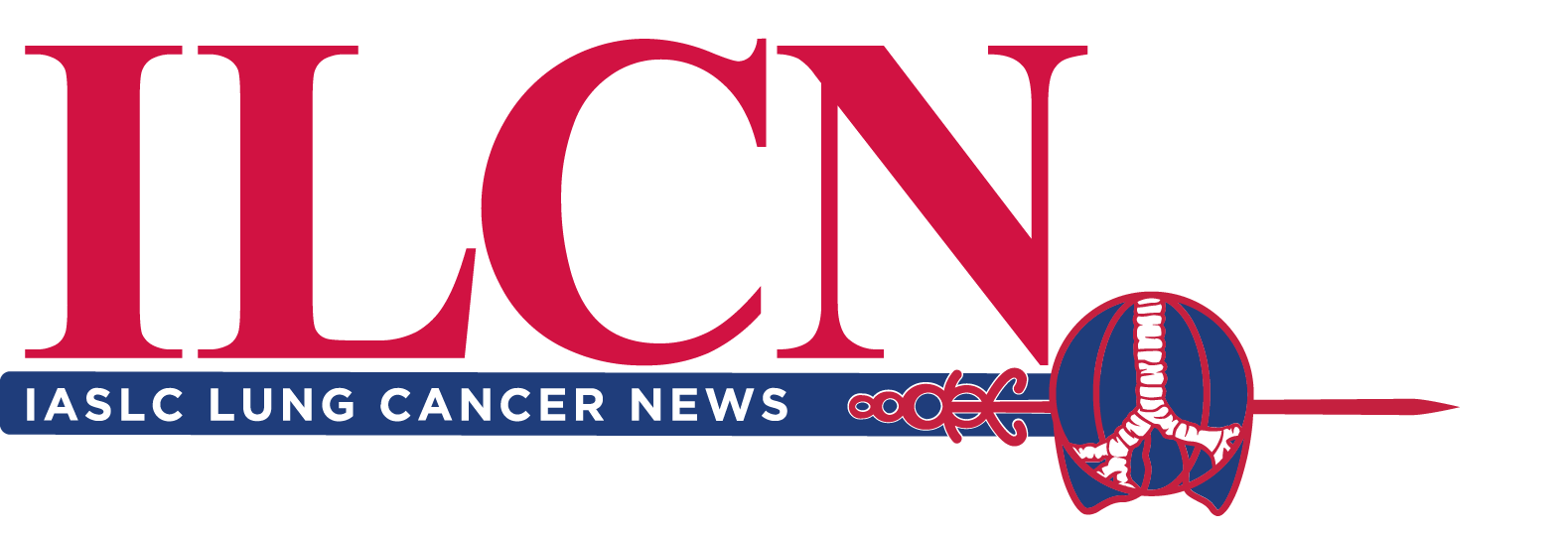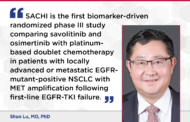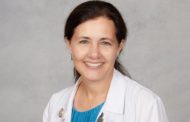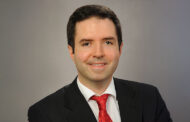Editor’s Note: This is the last of three articles summarizing highlights from the IASLC Award Lectureships presented during the 2023 World Conference on Lung Cancer. Read the previous articles in this series here.
Each year, the IASLC Lectureship Awards recognize clinicians and investigators who have made significant contributions to the treatment of patients with lung cancer. These awards are presented during the World Conference on Lung Cancer.
WCLC 2023 in Singapore saw the nine award lectures taking place during one dedicated plenary session on Sunday, September 10. Following is a summary of the highlights from the final three presentations. The session can also be viewed on-demand by registered attendees through December 31.
The Future of Pathology in Lung Cancer
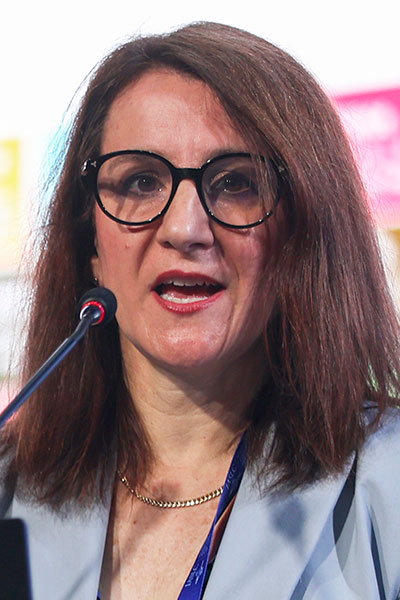
Wendy Cooper, MBBS, PhD, of Royal Prince Alfred Hospital, Sydney, received the Fred R. Hirsch Lectureship Award for Translational Research. Dr. Cooper began by remarking on how, when she trained, pathology was in its infancy regarding thoracic malignancies. “All we had to do was to look down the microscope and say whether it was small cell or non-small cell,” she said. “Who would have thought 20 years ago that we would have targetable alterations in at least 10 genes in our lung adenocarcinoma patients?”
Today, of course, biomarkers have changed the way pathologists work. Between subtyping for immunohistochemistry, genomic profiling for DNA/RNA, and providing tissue samples for use in clinical trials, today’s pathologist is more an active member of the clinical team than ever, Dr. Cooper said.
But predictive biomarker testing and the accessibility of drugs varies greatly globally, Dr. Cooper said.
“That’s a challenge that we continue to face in increasing access to care for all of our patients around the world,” she said.
Other likely future trends include moving genomic profiling into the early-stage disease setting.
“We’ll also see a continuing evolution of the role of pathological response assessment post neoadjuvant therapy and determining what relevance this has for clinical decision-making,” Dr. Cooper said.
Dr. Cooper closed her remarks by touching on the future role artificial intelligence might play in pathology.
“The clinical utility of artificial intelligence in diagnostic pathology remains unproven, but the potential applications are huge,” she said. “We need to ensure that implementation is based on reality rather than hype, and equity of access will continue to be a challenge we must all address,” she said
Global Perspectives on Optimizing the Patient Experience
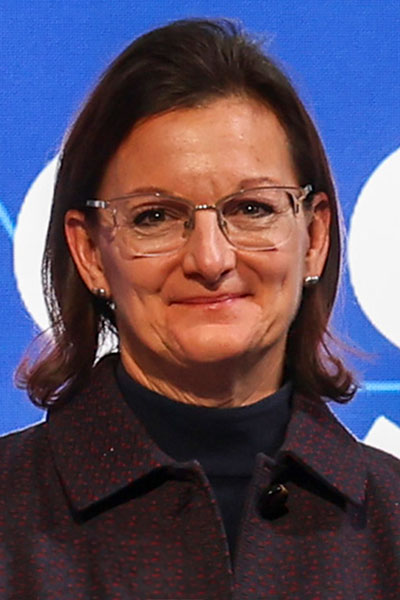
Next, Melissa Culligan, RN, BSN, MSc, Director of Clinical Research for the Division of Thoracic Surgery at Temple University Hospital, took the stage to receive the IASLC Lectureship Award for Nurses and Allied Health Professionals (NAHP).
Ms. Culligan expressed her eagerness to see nurses and allied health professionals receive recognition as members of the research enterprise.
“NAHP-led research complements other clinical research and, by virtue of the diverse expertise, offers a unique perspective and opportunities for improving the lives and outcomes of thoracic oncology patients,” she said.
NAHP-led research can focus on the ways in which these professionals already interact with thoracic oncology patients, Ms. Culligan said. These include:
- Preparing patients for treatment, supporting them through treatment, and helping with rehabilitation after treatment
- Enhancing the survivorship experience
- Holistic approach to pre-, peri- and post-treatment
- Involving family and/or non-family support people and services
- Personalizing care based on the specific needs of each patient
Ms. Culligan summarized several NAHP-led studies, including one on which she was an author, an international cross-sectional survey on NAHP research priorities in thoracic oncology. Future research should focus on the development and evaluation of interventions to improve quality of life and symptom management, particularly for pain, dyspnea, and fatigue, she said.
In the future, Ms. Culligan would like to see the development of an international thoracic oncology NAHP research consortium.
“It would provide a platform for collaboration in clinical research efforts and provide mentorship to early career NAHPs interested in leading and/or participating in clinical research,” she said.
Accurate Staging in Resource-Constrained Settings
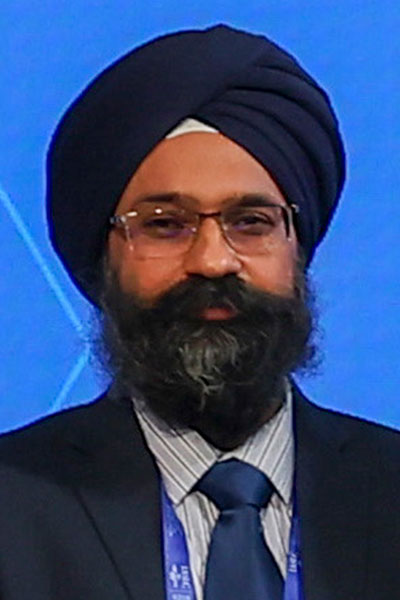
Navneet Singh, MD, DM, of the Postgraduate Institute of Medical Education and Research (PGIMER), Chandigarh, India, closed the session after receiving the Clifton F. Mountain Lectureship Award for Staging. He began his address by emphasizing the downstream importance of accurate staging: being able to identify more patients who have potentially resectable disease, leading on to more surgeries and, ultimately, more lives being saved.
Dr. Singh noted proudly that PGIMER was both the first institution from South Asia to contribute to IASLC’s TMN guidelines and has contributed more cases than any other South Asian institution to the new 9th edition, due out in early 2024.
Human resources can be limited, and economic and infrastructure resource constraints can often be significant in low- and middle-income countries, Dr. Singh said. However these aren’t the only challenges. Endemic tuberculosis and the absence of an effective, cost-effective screening program lead to delays in diagnosis, staging, and treatment, he said.
Imaging remains an important part of staging in all settings, Dr. Singh said, but imaging can’t always replace invasive staging procedures.
“In fact, endoscopic ultrasound and end bronchial ultrasound together comprise mediastinoscopy, and now you can do both with just one scope, which is helpful when many of our patients have both tuberculosis and lung cancer,” he said.
Dr. Singh closed by recounting postoperative visits with two patients who had received neoadjuvant chemotherapy prior to undergoing surgical resection. Both patients had pathological complete responses and no adverse prognostic factors.
“Even in the presence of resource constraints, focusing on potentially resectable disease, accurately staging the disease, offering patients curative intent treatment, and getting successful surgical resection done is feasible,” he said.
